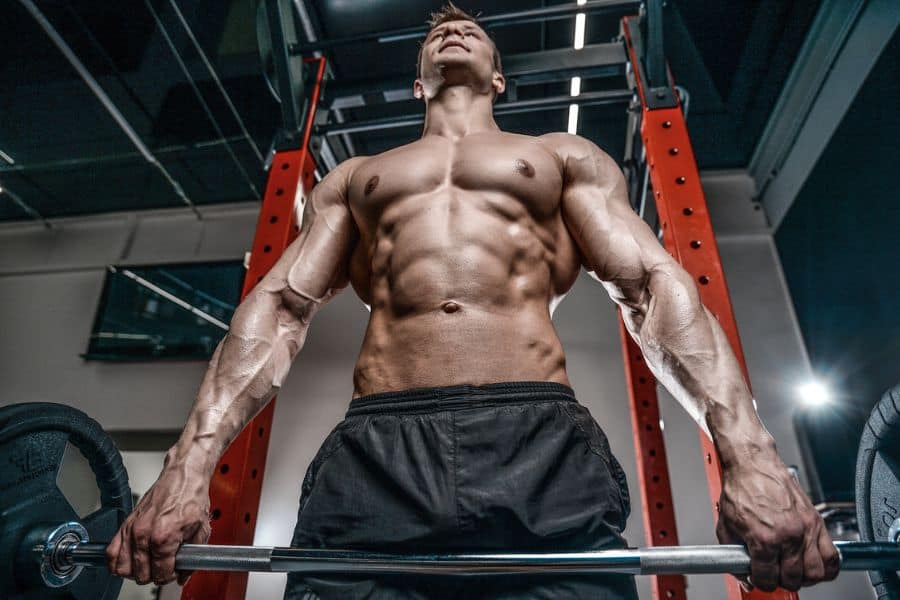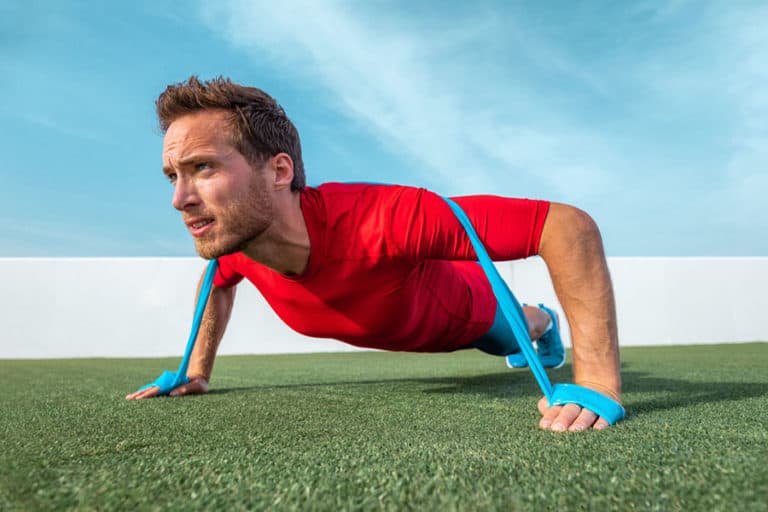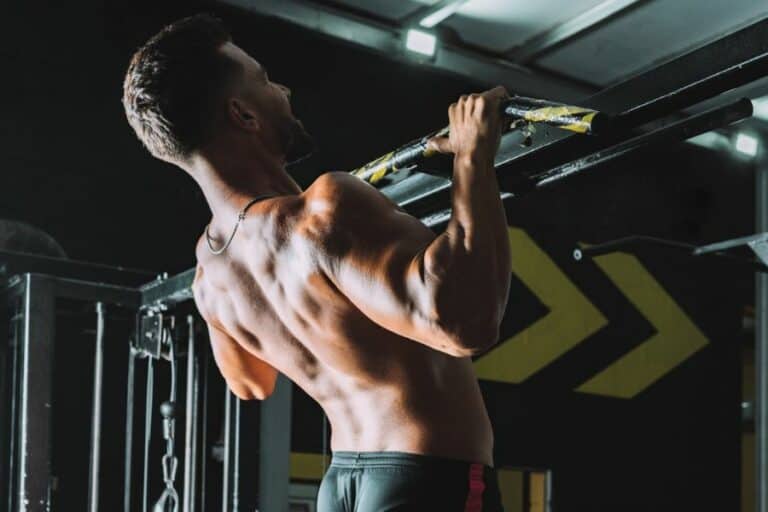How Long Does Muscle Pump Last?

How Long Does Muscle Pump Last | What Is A Muscle Pump | Causes Of Muscle Pump | Maximizing Muscle Pump | Does a pump mean muscle growth
Achieving a satisfying muscle pump during a workout is often considered a badge of honor among fitness enthusiasts and athletes alike. This temporary swelling and tightness in the muscles not only create an impressive visual effect but also evoke a sense of accomplishment.
However, many individuals wonder how long this coveted muscle pump actually lasts. In this article, we will delve into the intricacies of the muscle pump phenomenon and explore the question, “How long does a pump last?”
How long does muscle pump last?
The muscle pump, also known as the gym pump or workout pump, can last for nearly two to three hours after an intense workout.
Although the muscles stay pumped not for longer, consistent workout can help you achieve your muscle pump goals. Moreoever, the duration can vary based on factors like the individual’s body type, the intensity of the workout, and their nutritional intake.
What is a muscle (gym) pump?
The feeling of tightness and fullness in your muscles during and after an intense workout is often referred to as the “muscle pump.” This temporary sensation is not only satisfying but also serves as an indicator of an effective training session.
Understanding the Muscle Pump Phenomenon
The muscle pump is a result of increased blood flow [1]National Library of Medicine: Regulation of Increased Blood Flow (Hyperemia) to Muscles During Exercise: A Hierarchy of Competing Physiological Needs (Hyperemia) to the muscles and vascular response during exercise.
This heightened blood flow, coupled with an accumulation of metabolites like lactate and increased fluid volume, leads to temporary swelling of the muscle tissues.
This is primarily attributed to the dilation of blood vessels, including arteries and veins, supplying the muscles. As a result, the muscles appear larger and more vascularized, creating that desired pump sensation.
Maximizing Muscle Pump: Strategies to Keep Your Muscles Engorged and Strong
The muscle pump, scientifically known as “exercise-induced muscle hypertrophy,” occurs when blood vessels expand, delivering a rush of nutrient-rich blood to the muscles, resulting in a temporary increase in size and vascularity.
If you’re looking to enhance your muscle pump and maximize gains, here are some effective strategies to incorporate into your training regimen.
1. Include Isolation Exercises
Isolation exercises, such as bicep curls, tricep workouts, and leg extensions, isolate a single muscle or a specific region of a muscle, allowing for focused stimulation and blood flow.
Isolation exercises provide an opportunity to fine-tune weaker muscles or muscle imbalances, improving overall symmetry and aesthetics. By including isolation exercises strategically in your workouts, you can enhance muscle pumps and achieve a well-rounded physique.
2. Focus on Time Under Tension
Manipulating the time under tension (TUT) during your workouts can significantly impact the muscle pump.
By controlling the tempo of each repetition and emphasizing the eccentric (lengthening) phase of the exercise, you increase the duration of the muscle contractions, leading to enhanced metabolic stress and muscle pump.
Slow down your lifting speed, pause briefly at the peak contraction, and emphasize the lowering phase for optimal results.
3. Maintain your hydration levels
Hydration is a critical factor that influences the muscle pump. Adequate hydration ensures optimal blood volume and circulation, facilitating the delivery of oxygen and nutrients to the muscles during exercise. It helps maintain blood flow, supporting the engorgement and vascularity associated with the muscle pump.
Proper hydration also aids in preventing muscle cramps [2]National Library of Medicine: Influence of Hydration and Electrolyte Supplementation on Incidence and Time to Onset of Exercise-Associated Muscle Cramps and fatigue and maintaining overall performance.
To promote hydration, it is recommended to drink water before, during, and after exercise. Maintaining a good hydration status is essential for optimizing the muscle pump and supporting overall physiological function during intense physical activity.
4. Consume more protein and carbs
Protein, in the form of food or a shake, along with carbohydrates, can promote muscle pumping through several mechanisms.
When consumed, protein provides the essential amino acids necessary for muscle tissue repair and growth. These amino acids help in rebuilding and strengthening muscle fibers, leading to increased muscle mass and improved muscle pump.
Additionally, carbohydrates play a crucial role in replenishing muscle glycogen stores to provide energy for intense workouts. Carbs also indirectly increase blood flow to promote muscle pump.
Protein consumption [3]PubMed: Protein for exercise and recovery supports both muscle growth and recovery. It further enhances protein synthesis, and improves nutrient delivery to the muscles, ultimately contributing to better muscle growth and a more significant muscle pump effect.
5. Try pre workout or muscle pumping supplements
Pre-workout supplements or muscle pumping supplements can help you get that amazing muscle pump during your workouts. These supplements usually have special ingredients like L-arginine or citrulline that increase the production of nitric oxide in your body.
This, in turn, helps to widen your blood vessels, allowing for better blood flow to your muscles while you’re exercising. And when your muscles get more blood, they also get more oxygen and nutrients, which can really boost their performance and endurance.
Some pre-workout supplements also contain caffeine, which can give you an extra kick and improve blood flow. So, all of these effects combined create that desired muscle pump feeling, making you feel pumped up, focused, and ready to crush your workout!
6. Utilize Supersets and Dropsets
Utilizing supersets and dropsets during your workouts can contribute to a more prolonged muscle pump.
Supersets involve performing two exercises back to back with no rest in between. This technique increases blood flow and metabolite accumulation in the muscles, leading to a sustained pump effect.
Dropsets, on the other hand, involve performing multiple sets of an exercise with decreasing weights. This approach intensifies the workout, promoting greater muscle fatigue and enhancing the pump sensation. By incorporating these techniques into your weight training routine, you can extend the duration of your muscle pump and potentially maximize your workout’s effectiveness.
7. Increase the reps
By pushing your muscles to perform more repetitions, you create a greater demand for blood flow and oxygen delivery, resulting in a more pronounced muscle pump.
Higher rep ranges, such as 10-15 reps per set, can help achieve this effect of good muscle pump. However, it’s important to maintain proper form and not sacrifice technique for the sake of increasing reps.
Incorporating progressive overload and gradually increasing the number of reps over time can contribute to muscle growth and satisfying pumped muscles.
Does a pump mean muscle growth?
Your muscles get temporary swelling and engorgement, which is often referred to as a muscle pump after workout. This is not necessarily a direct indicator of muscle growth.
While it can be a sign of increased blood flow and nutrient delivery to the muscles, long-term muscle growth is primarily influenced by factors such as progressive overload, adequate nutrition, and sufficient recovery.
Consistently challenging the muscles with appropriate resistance training and providing the necessary nutrients and rest will contribute to muscle growth over time.
Conclusion
The muscle pump is more than just a temporary sensation during exercise; it plays a pivotal role in muscle growth and recovery. While its duration varies from person to person, incorporating appropriate training strategies and lifestyle choices can maximize its benefits.
Remember that the muscle pump is not the sole indicator of an effective workout, but by optimizing its duration and combining it with a well-rounded training and recovery plan, you can further enhance your athletic performance and muscle-building efforts. Embrace the muscle pump as a valuable tool in your fitness journey and enjoy the rewards it brings.
References
| ↑1 | National Library of Medicine: Regulation of Increased Blood Flow (Hyperemia) to Muscles During Exercise: A Hierarchy of Competing Physiological Needs |
|---|---|
| ↑2 | National Library of Medicine: Influence of Hydration and Electrolyte Supplementation on Incidence and Time to Onset of Exercise-Associated Muscle Cramps |
| ↑3 | PubMed: Protein for exercise and recovery |







